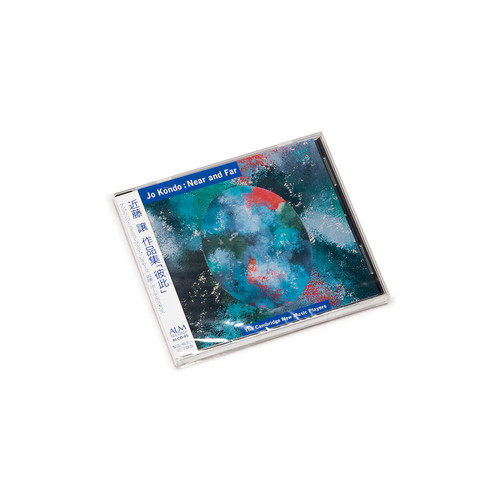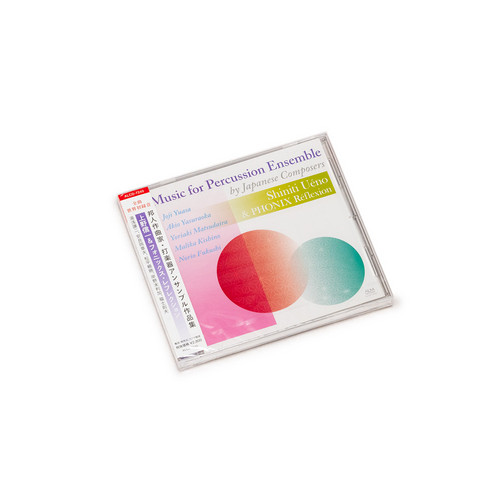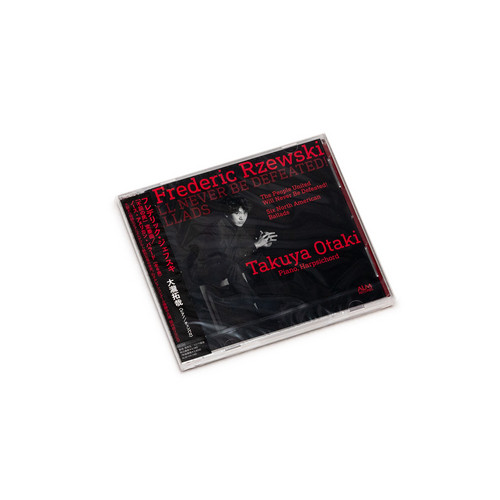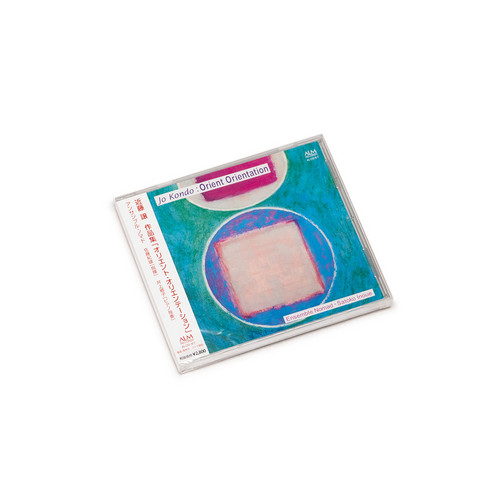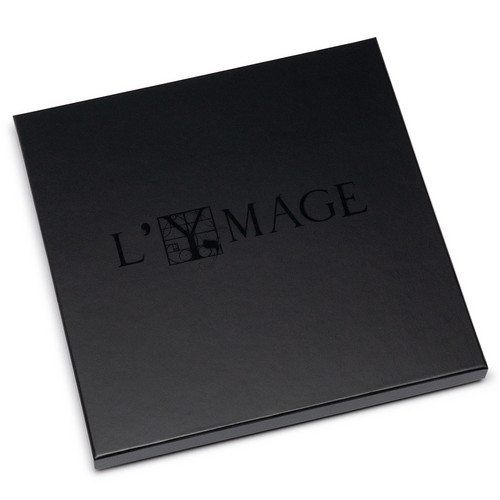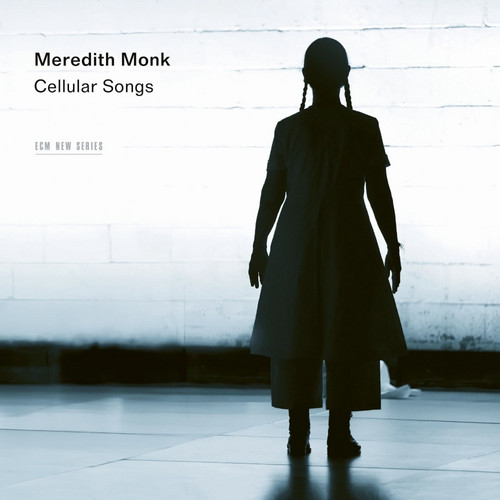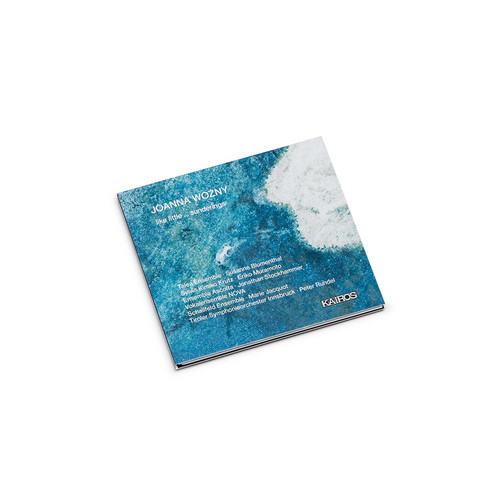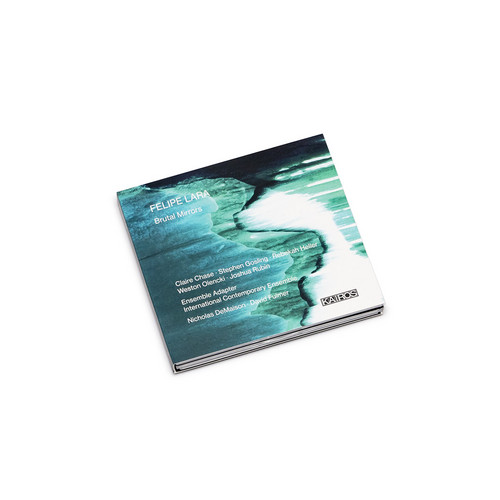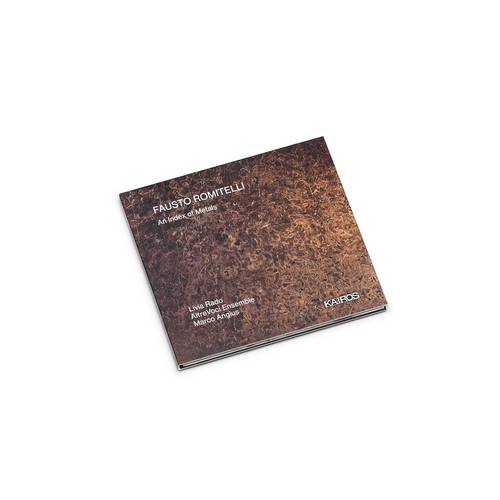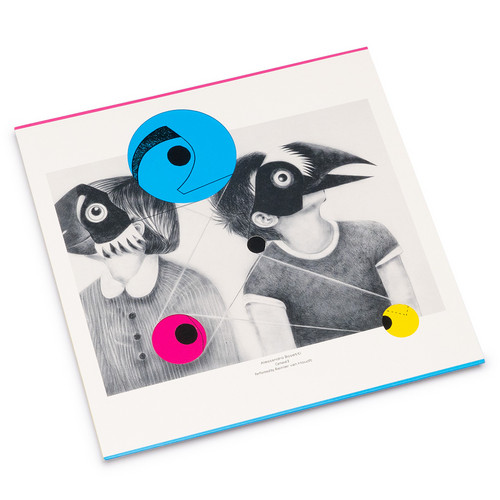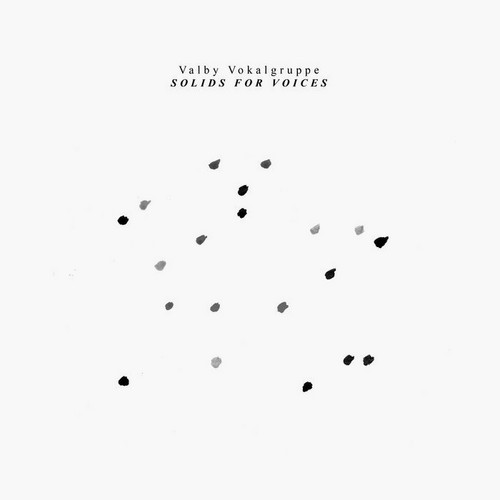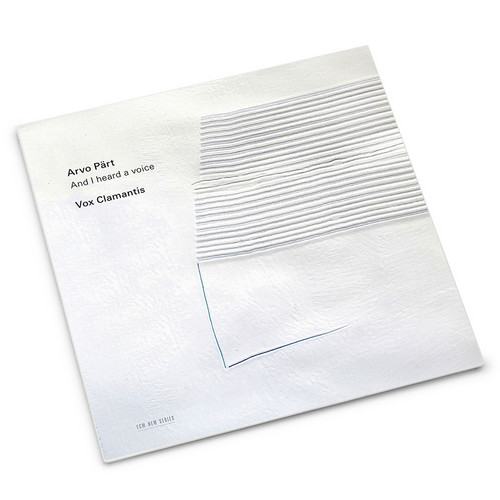Crypte
Japanese guitarist Tsunehito Tsuchihashi, celebrated for his versatile artistry across both classical and contemporary repertoires, proudly presents his debut solo album, “Crypte.” This extraordinary recording, released in April 2025, brings together the visionary works of five contemporary composers, most written on commission and premiered by Tsuchihashi himself, showcasing his commitment to expanding the guitar’s expressive potential through innovative collaborations.
“Crypte” is a testament …
Like The Dyer's Hand / Foujita
This album features two film scores by Satoshi Satō. Scooping Water, the Moon in Hand is a documentary film tracing the life of legendary poet and Chinese literary scholar Ye Jiaying (1924–). It won the Best Documentary Award at the 33rd China Golden Rooster Awards (2020), often referred to as China's Academy Awards. Ye Jiaying is also a scholar of Du Fu, and Satō Sōmei set Du Fu's poem “Eight Poems on Autumn Feelings” to music at the request of the film director. Director Oguri Kōhei's Foujita …
Near And Far
*2025 stock* Renowned Japanese composer Jo Kondo unveils his captivating album “Near And Far,” performed by The Cambridge New Musik Players and conducted by Paul Hoskins. This distinguished release, first presented in 1996, features five transcendent works that invite listeners into Kondo’s unique sound world across 47 minutes of meticulously crafted chamber music.
With a deep sensitivity to both space and sonority, “Near And Far” balances subtle instrumental interplay with Kondo’s signature min…
In Yokohama
*2025 stock* Renowned Japanese composer Jo Kondo is celebrated for his unique and refined approach to contemporary classical music. This recording offers an intimate journey into Kondo’s distinctive musical world, marked by clarity, restraint, and subtle yet powerful expression.
In Yokohama brings together a collection of works that exemplify Kondo’s lifelong exploration into sound, silence, and the delicate spaces in between. Throughout the album, the listener is invited to experience music t…
Shiniti Ueno, Phonix Réflexion, Joji Yuasa, Akio Yasuraoka, Yori-Aki Matsudaira, Malika Kishino, Norio Fukushi
Music For Percussion Ensemble By Japanese Composers*2025 stock* Renowned percussionist Shiniti Uéno unveil this latest recording project: Music for Percussion Ensemble by Japanese Composers. This remarkable album offers a profound exploration of Japan’s contemporary music landscape, highlighting the diversity, refinement, and innovation that can be found in its modern percussion repertoire.
The recording showcases six visionary composers whose works have shaped and expanded the language of percussion music in Japan: Joji Yuasa, Akio Yasuraoka,…
The people united will never be defeated! / Six north American ballads
*2025 stock* A landmark new recording brings together two of Frederic Rzewski’s most powerful and socially engaged works, interpreted with striking intensity by pianist Takuya Otaki. At the heart of the release is The People United Will Never Be Defeated! (1975), a monumental set of 36 variations on the Chilean resistance song “¡El pueblo unido jamás será vencido!”, composed as an ode to solidarity and resilience in times of political struggle. Widely considered one of the pinnacles of late 20th…
Orient Orientation
*2025 stock* A new recording brings together the refined artistry of Japanese composer Jo Kondo, the visionary musicians of Ensemble Nomad, and the distinct pianism of Satoko Inoue in a captivating exploration of sound, texture, and form. Orient Orientation offers a rare and illuminating entry into Kondo’s world, where silence, resonance, and subtle contrasts guide the listener through an intimate sonic landscape.
The album presents works that showcase Kondo’s unique compositional language—mar…
Triadic Memories
*2025 stock* The celebrated pianist Aki Takahashi presents an essential interpretation of Morton Feldman’s monumental work "Triadic Memories", a cornerstone of late 20th-century piano music. Known for its meditative expansiveness and delicate shifts in color, this composition stretches the boundaries of time, inviting listeners into Feldman’s unique sound world where silence and resonance carry as much weight as the notes themselves.
Recorded with Takahashi’s characteristic sensitivity and tec…
L'Ymage
*300 copies limited edition* Ars nova meets dark folk, aural cinema, contemporary music, drone and much more... An astonishing album gathering three extended pieces that unfold the works of medieval musical genius Guillaume de Machaut, the greatest and last of the troubadours. Lovingly recorded by sound master Frederic Alstadt, featuring Clara Levy, Stéphane Clor & Eugénie De Mey, this album captures all the poignancy and poetry, of this timeless music. A passionate performance by virtuosic musi…
Cellular Songs
Cellular Songs is the first Meredith Monk release with ECM since the extensive box-set Meredith Monk: The Recordings in 2022 and the first recording of new music since 2016's On Behalf of Nature. It is also the second part of an interdisciplinary trilogy of performance works by Meredith Monk that began with On Behalf of Nature, a meditation on the precarious state of our global ecology. Cellular Songs turns attention to the very fabric of life itself, and evokes such biological processes as laye…
Like little ... sunderings
Joanna Woźny’s music resists certainty. Fragmented, elusive, and ever-transforming, it listens into the noise of the everyday and distills from it something fiercely alive. Her works trace perception’s fault lines – between sound and noise, sense and abstraction – constantly unmaking and remaking form. In this sonic terrain, repetition never means stasis; structure dissolves into process. Each piece is a beginning: a seismographic record of emergent thought, a refusal to conclude. For Woźny, com…
Brutal Mirrors
Felipe Lara’s music is driven by a visceral sense of presence and process. Beneath its notated clarity lies a deep trust in the performers: a shared language built over years of collaboration, where every sound becomes a negotiation between gesture, breath, and form. Lara’s work moves between the intimate and the monumental, but always seeks what lies behind the surface – where structure becomes porous, expression is embodied, and music emerges as a living tension between instability and control…
Univers Parallèles - Des Nuits Et Des Jours
"The line is a whole, an identity, for a particular place and time." — Fred Sandback
An Index Of Metals
An Index of Metals, Fausto Romitelli’s final work, is an ecstatic ritual of sound, light, and image—a multimedia opera that fuses electronic music, psychedelic ecstasy, and brutal-poetic texts into an intoxicating sensory flood. Blending techno, pop art, noise, and spectralism, Romitelli propels music theatre into a hallucinatory present: metallic, eruptive, rebellious. The voice is distorted, the image disintegrates, sound becomes palpable material. In this uncompromising fusion of composition,…
Found Keys
Found Keys is the debut album by American artist Ruth Maine. Although Ruth has been playing and composing music for over two decades, this is the first time she decided to record some of her varied compositions and share them with the public. But in times when it is the norm to clamour for attention, she prefers to go the opposite way. Ruth likes to let her music speak for itself and stay in the shadows.
The 16 short piano pieces heard on this album, each about two to three minutes long, were re…
Carnaval 2
Adding to their already singular catalog of releases, Three:Four Records returns with Carnaval 2, a stunning new work by the composer Alessandro Bosetti, performed by pianist Reinier van Houdt. A vividly conceptual and post-modern hybrid, reinterpreting Robert Schumann's Carnaval as a radically reconsidered series of piano and electro-acoustic interludes - forcing the sensibilities and aesthetics of 19th Century chamber music to coexist with those of avant-garde - it's easily one of the singular…
Speechless
"Speechless (2019) is an opera for 4 vocal soloists, bass orchestra and community choir, and is intended as a personal response to the plight of refugees worldwide. It inspired by the Australian Human Rights Commission report, ‘The Forgotten Children: National Inquiry into Children in Immigration Detention,’ overseen by Gillian Triggs. When this report was tabled in the Australian Parliament in 2014, I was overcome with the cruelty of the debate around the future of detained asylum seekers. Spee…
Nocturnes
The fourth CD in Zorn’s remarkable series of piano trio recordings exploring classical forms, Nocturnes is an absolute delight. Preceded by Suite for Piano (2022), Ballades (2024), and the Impromptus (2025), Nocturnes is Zorn’s personal take on the beautiful tradition of night music. Touching on Chopin, Scriabin, Debussy, Berg, and more, the music is a wonderland of subtlety—dreamy, drifting, and utterly compelling. Brian, Jorge, and Ches, three of Zorn’s closest and most trusted collaborators p…
Solids For Voices
*300 copies limited edition* Valby Vokalgruppe returns with Solids for Voices — a new album landing on 7th November 2025 via Hands in the Dark. Initiated in 2008 by Anja Jacobsen, the Danish collective’s current line-cup is completed by Lil Lacy, Sonja LaBianca, Cæcilie Trier and Laura Marie Madsen. The group has written and performed a large number of cross-aesthetic pieces over the years, including an album Bah New Era released in 2012 on Eget Værelse.
Sharpened to its core, the group dives de…
And I Heard a Voice
Estonian vocal ensemble Vox Clamantis and their leader Jaan-Eik Tulve have established themselves among the leading interpreters of Arvo Pärt’s music over a quarter-century of close collaboration with the composer – a relationship that builds on the almost half a century long artistic partnership between Pärt and producer Manfred Eicher. Of the ensemble’s ECM New Series recording The Deer’s Cry, the BBC Music Magazine wrote that “the level of artistry necessary to achieve the kind of living, bre…


